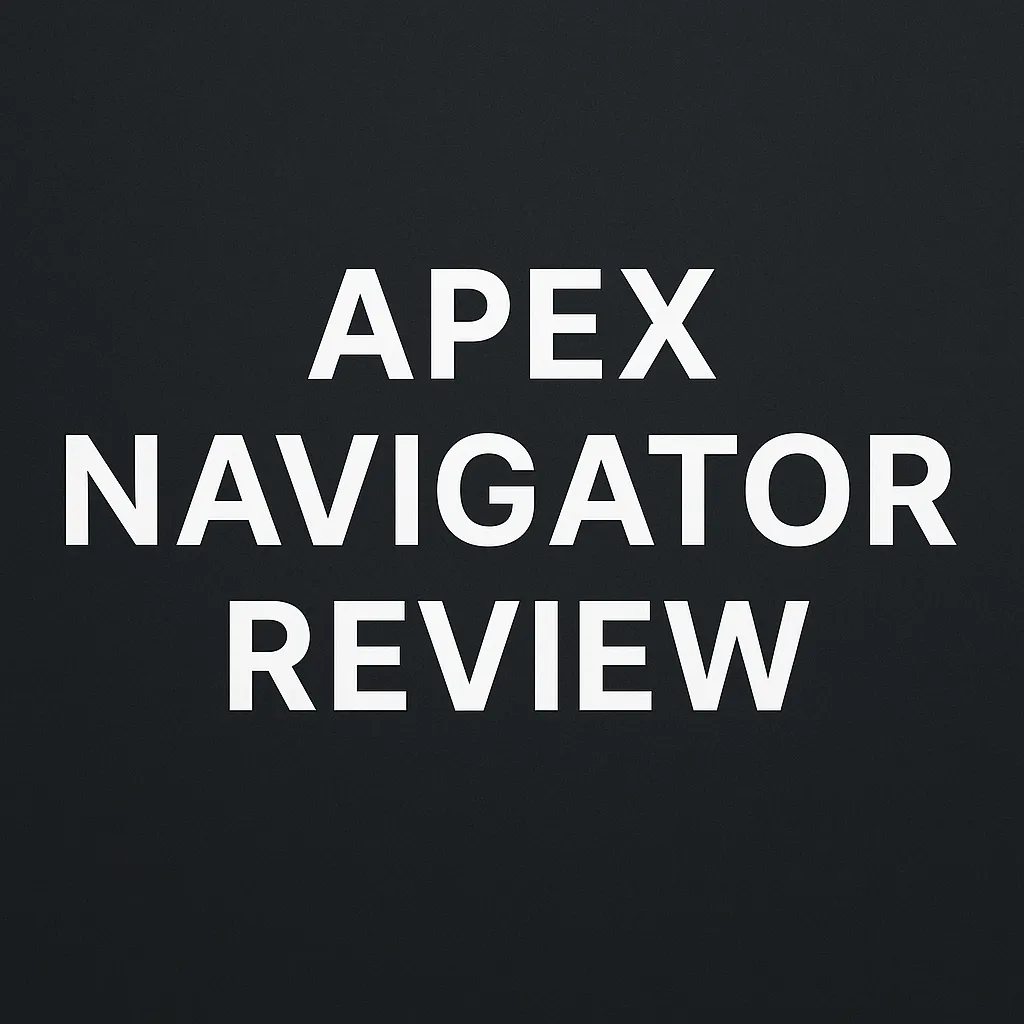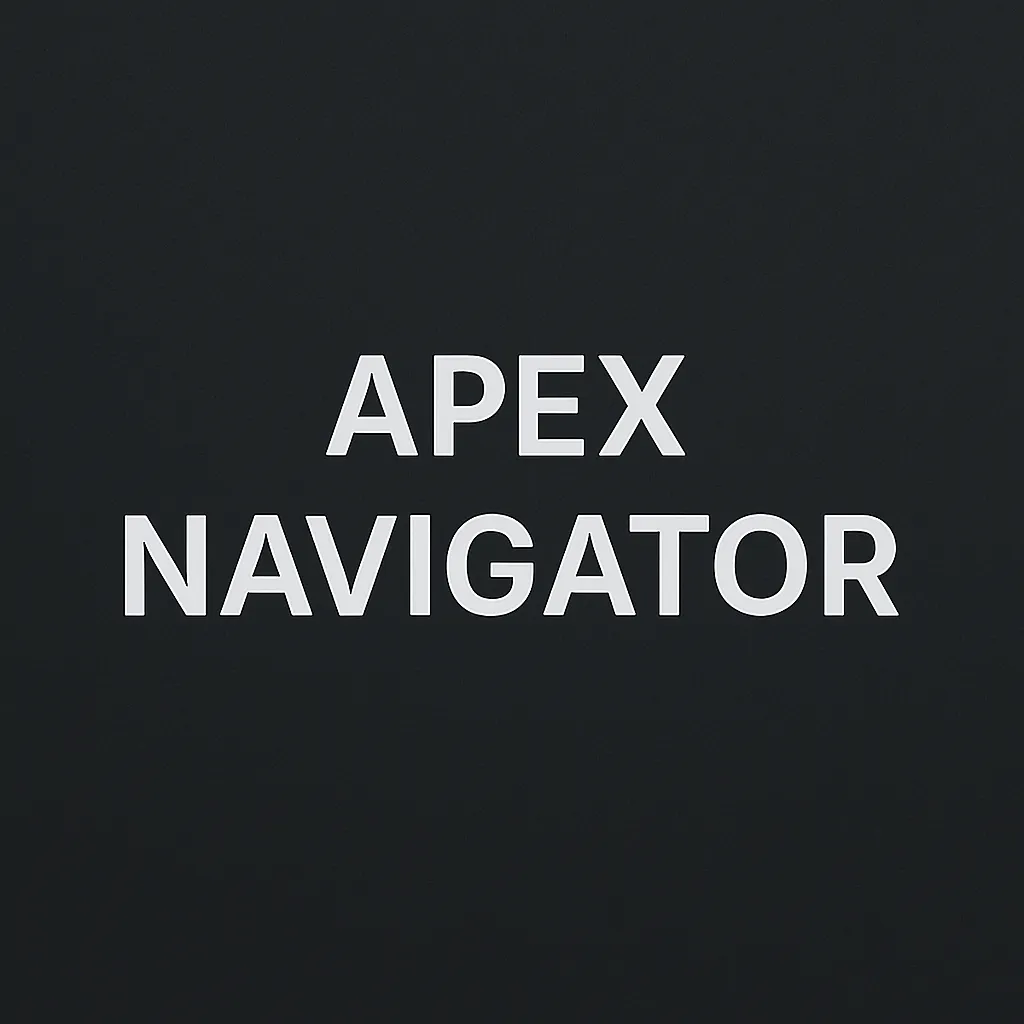Apex Navigator Review - Is This Amazon FBA Program Worth Exploring?
Welcome to this Apex Navigator review. When I first came across this program, it was presented as a structured, step-by-step system for building and scaling an Amazon FBA business with live coaching, accountability, and community support.
The promise was clear: consistent guidance from experienced mentors, real feedback, and an easier way to navigate the complex world of Amazon selling.

From my experience inside, the setup did include what was advertised — weekly coaching calls, private mentorship, and a structured curriculum that walked through product research, sourcing, and scaling.
It wasn’t another recycled video course. That said, it also came with a few issues I didn’t expect: vague refund terms, limited transparency on costs before enrolling, and an aggressive marketing tone that sometimes oversimplified what Amazon FBA actually involves.
It’s not a scam, but it’s not effortless either.
The material is detailed enough to help you understand FBA, but success depends entirely on how much time, capital, and persistence you’re willing to invest. The mentors can guide you — they can’t build your business for you.
Pros
Live coaching calls that provide hands-on help and feedback
Structured lessons covering sourcing, listing, and scaling steps
Supportive community with active mentors
Good balance between strategy and execution for beginners
Cons
Pricing not clearly listed before joining
No visible refund guarantee
Marketing promises can create unrealistic expectations
Real success requires a large additional investment in products and ads
If you’ve ever wondered why most programs sound simple but rarely deliver, I broke down what’s really behind that gap here.
What is Apex Navigator?
I first came across the program after seeing it mentioned repeatedly in a few e-commerce circles and online communities that focus on Amazon FBA.
What caught my attention wasn’t the flashy promises of quick profits — I’ve seen plenty of those — but the focus on mentorship.
Most training programs rely entirely on prerecorded videos and generic tutorials, but this one highlighted direct coaching and real-time guidance. That distinction made it sound more grounded.
At that point, I already understood the basics of selling on Amazon but struggled with scaling and consistency.
The idea of being able to speak with experienced sellers instead of relying on self-study appealed to me.
The mention of ongoing mentorship gave the impression that it could bridge the gap between learning and execution — something most programs fail to do.
The reviews I found also emphasized personalized support during onboarding, which added to the credibility.
Still, I had mixed feelings from the start. The biggest red flag was that pricing wasn’t listed anywhere on the website.
You had to book a call to learn the cost, which immediately raised questions for me about transparency.
In the end, curiosity won. I wanted to see whether this approach could genuinely make the process more manageable for beginners — or if it was just another polished pitch disguised as a mentorship opportunity.
What's Inside Apex Navigator?
Once I joined, I found that the structure was a mix of video training, live group calls, and one-on-one mentorship.
The setup wasn’t overly flashy — it was built around practical execution rather than motivational hype, which I appreciated.
The lessons were broken down into a clear sequence: product research, supplier sourcing, listing optimization, advertising, and eventually scaling.
Each module was short and focused, which made it easier to digest without getting lost in theory.
What stood out most was the interactive element. There were weekly live sessions where mentors walked through real examples, answered product-specific questions, and even reviewed student listings in real time.
That made it easier to apply what I was learning instead of just collecting information.
The private community also played a bigger role than I expected. It wasn’t just a random forum — it had active participation from coaches and students sharing their progress.
The discussions were mostly about product testing, keyword research, and ad performance.
Some members were already making sales, while others were still in the early stages, which created a mix of experiences that helped keep things realistic.
There were also additional resources, like supplier outreach templates and profit calculators.
They weren’t groundbreaking, but they helped streamline parts of the process that usually take forever to figure out.
Overall, what I got felt structured and actionable. It wasn’t revolutionary, but it gave me a clearer roadmap to follow and reduced the usual trial-and-error guesswork that makes most beginners quit early.
My Personal Experience with Apex Navigator

The first thing that stood out to me once I got started was how hands-on the coaching actually was.
I’ve joined other e-commerce programs before, and most of them promised mentorship but delivered little more than automated replies or community moderators pretending to help.
This experience was different. The coaches were responsive, direct, and clearly knew the Amazon ecosystem from real experience.
During my first few sessions, I brought up issues around supplier communication and pricing negotiations.
Instead of generic advice, one of the mentors actually walked me through an example message I could send to a manufacturer and even showed me how to filter potential suppliers more effectively.
That single interaction saved me days of trial and error.
The group calls were also surprisingly interactive. They weren’t just pre-recorded “live sessions” like many courses use as filler. Real people asked real questions, and the coaches responded in depth.
The environment felt supportive, not like a constant sales pitch. Even when someone brought up a failed product test, the coaches focused on diagnosing what went wrong instead of sugarcoating it.
The one-on-one call system worked well too, though it required scheduling in advance.
The mentor assigned to me gave detailed feedback on my product selection and helped refine my launch plan.
The advice wasn’t earth-shattering, but it was specific — and that made it valuable.
Overall, the coaching experience felt like the strongest part of the program. The mentors seemed to genuinely want students to succeed, and that personal accountability made the learning process smoother.
Still, it’s important to note that they guided — they didn’t do the work for you. The progress ultimately depended on how much time I put in between sessions.
If you want to avoid making the same mistakes most beginners do, it’s worth reading this first.
How Does The Apex Navigator Training System Work in Practice?

The training follows a step-by-step progression designed to take a beginner from zero to a functioning Amazon FBA business.
It’s structured clearly enough to follow without feeling overwhelming, though it still demands focus and consistency.
The first phase revolves around product research, which is the make-or-break stage of any FBA business.
The lessons walk through market validation, competition analysis, and profit margins using familiar tools like Helium 10 and Jungle Scout.
I’d seen this kind of material before, but the difference here was how the coaches applied it in live sessions.
They used real product examples from student submissions, which made the theory more relatable.
Once the product phase is complete, the next step is sourcing — contacting suppliers, comparing quotes, and calculating shipping costs.
The templates provided helped streamline the outreach process, though I still had to spend a lot of time negotiating with manufacturers.
The training explained the basics of vetting suppliers, but the deeper logistics (like customs fees and long-term supply chain planning) were left for students to figure out on their own.
The launch and listing sections were detailed, covering copywriting, keywords, and PPC setup.
This was where I started to see progress. The instructors emphasized optimization and testing rather than quick wins, which kept my expectations realistic.
By the time I reached the scaling material, I realized the focus wasn’t on fancy tactics — it was about building consistency.
That might sound simple, but in a business full of shortcuts and hype, it was refreshing to hear someone say that steady growth beats viral luck.
In practice, the system works — but only if you’re ready to put in the time, money, and patience. It gives you a framework, not a finish line.
The Results I Achieved (and What Fell Short)
After a few months of following the system, I managed to get my first product live on Amazon.
It wasn’t an overnight success — it took close to three months just to get through product sourcing, shipping, and listing setup.
My first week of sales brought in a handful of orders, which felt good, but it also exposed how thin profit margins can be once you factor in shipping, fees, and ads.
What went well was the structure. Having a framework to follow kept me accountable. I wasn’t constantly jumping between random strategies from YouTube or Reddit.
The mentors gave feedback on my product listing and ad setup, and those adjustments actually improved click-through rates.
Within a month, I went from barely visible to ranking on the second page for a few main keywords.
However, what didn’t go as smoothly was profitability. Between the cost of inventory, PPC spending, and Amazon’s fulfillment fees, it became clear that breaking even would take time.
The program helped me understand the moving parts, but it didn’t make them any cheaper.
There were weeks when I spent more on ads than I earned in sales, and that reality hit hard after investing so much upfront.
Another challenge was timing. The course made the process sound linear, but delays with suppliers and shipment bottlenecks were common.
Those slowdowns reminded me that even with guidance, e-commerce is unpredictable.
By the end of my first full quarter, I wasn’t making big profits, but I had learned how to read data, adjust campaigns, and avoid some beginner mistakes.
It wasn’t the life-changing outcome that’s often advertised, but it was progress — slow, steady, and grounded in reality.
Apex Navigator Pros and Cons
After spending enough time inside and testing the system myself, I started to see both the strong points and the weaker spots more clearly.
Like most programs built around mentorship and structure, it has genuine advantages — but also a few problems that can easily catch newcomers off guard.
Starting with the positives, the biggest advantage is the access to real mentors.
The coaches I interacted with weren’t reading from scripts — they had hands-on experience and spoke from what they’d actually done on Amazon. That gave the sessions credibility and made the advice more practical.
I also liked how organized the training was. The modules followed a logical order, so I never felt lost or unsure about what came next.
The community was another plus. Having a space where people share progress, struggles, and lessons learned made a huge difference.
It kept me from feeling isolated, and some of the peer feedback ended up being surprisingly useful.
It’s easy to underestimate how much momentum a supportive environment can create, especially when you hit inevitable setbacks.
That said, there are real drawbacks. The biggest one is cost transparency. You don’t see the price upfront, and that alone makes the program harder to trust at first.
Then, there’s the lack of a visible refund policy. For a program that can run several thousand dollars, that’s a serious omission.
The other issue is that, despite the structure, success still depends on your own resources and risk tolerance.
You’re expected to fund inventory, ads, and tools — expenses that can easily push total startup costs well beyond the course fee. If you’re not ready for that, frustration sets in fast.
Overall, it’s a well-built system, but not one that magically simplifies Amazon FBA. It helps you make fewer mistakes, not skip them altogether.
Who is Apex Navigator For?
After going through the full process myself, I’d say this program is best suited for people who already understand that Amazon FBA is a long-term game — not a quick flip.
It’s built for beginners, yes, but beginners who have the discipline and budget to stay consistent through the slower parts of the journey.
If you’re patient and willing to learn through trial and error, you’ll probably find the mentorship useful.
The framework is especially helpful for those who prefer guided accountability over self-learning.
If you’ve ever struggled with following through on online courses, having live calls and mentors who check your progress can make a noticeable difference. It keeps you moving forward even when results are slow.
On the other hand, it’s not a good fit for anyone looking for automation or “hands-free” income.
Despite the marketing tone, this is still a very manual business. You’ll be handling suppliers, managing ads, monitoring data, and constantly testing small adjustments. Anyone expecting passive income will be disappointed.
It’s also not ideal for people with tight budgets. The upfront course fee is already a few thousand dollars, but the real cost comes afterward — inventory, shipping, and advertising.
If you can’t comfortably invest beyond the enrollment price, you’ll likely hit a wall fast.
In short, this program works best for people who have both the time and capital to commit and who value mentorship more than shortcuts.
If you fit that description, you’ll probably find the system worthwhile. If not, it might feel like an expensive reminder that FBA isn’t for everyone.
How Much Does Apex Navigator Cost?
The price to join the program is $5,000, which covers access to the full training system, live group calls, and one-on-one mentorship sessions.
That’s a significant amount of money — especially considering it’s marketed mainly to beginners.
What made me pause initially was that the pricing isn’t disclosed publicly.
You only find out the amount after a consultation call, which creates an unnecessary layer of pressure for anyone just trying to make an informed decision.
Once inside, I couldn’t find a visible or clearly stated refund policy. From what I gathered in the onboarding material and discussions with other members, refunds aren’t typically offered once payment is made.
That’s something every potential buyer should understand before committing. For a $5,000 program, a transparent refund or satisfaction window would go a long way toward building trust.
But the $5,000 isn’t the full story. The real cost of implementing what’s taught is much higher.
Running a legitimate FBA business requires additional spending in several areas.
For example, inventory for your first product can range from $2,000 to $4,000, depending on product type and quantity.
Advertising costs can easily add another $500 to $1,000 per month during the launch phase.
Then there are software subscriptions — product research tools, keyword trackers, and profit calculators — which add a few hundred more each month.
Altogether, a realistic startup estimate lands between $8,000 and $10,000 before you see consistent returns.
The program does help minimize wasted effort, but it doesn’t eliminate the financial risk. That’s the part that marketing doesn’t always emphasize clearly enough.
From a value standpoint, I’d call it solid but situational. For someone serious about building an FBA business from scratch and who can afford the investment, it provides structure, guidance, and accountability.
For anyone hoping for quick or guaranteed results, it’s likely to feel overpriced.
Final Verdict
After going through the full process — from onboarding to product launch — I’d describe this program as structured, helpful, and genuinely educational, but not nearly as effortless as it’s often presented.
The system gives you clear direction, but you’re still responsible for executing every step and absorbing every setback along the way.
The mentorship and live calls were the strongest parts of the experience. Having coaches who actually answered detailed questions about supplier issues and product selection made a noticeable difference. It felt less like theory and more like guided practice.
For beginners who feel overwhelmed by Amazon’s complexity, that support can be worth a lot.
Still, the high entry cost changes the equation. Paying $5,000 upfront with no refund policy is a serious commitment, especially when you factor in the additional $3,000–$5,000 needed for inventory, ads, and tools.
That total investment is something most new sellers underestimate, and it’s one of the reasons many quit halfway through.
The program gives you structure, but it doesn’t remove risk — and it certainly doesn’t make the business model easy.
If you have the resources and patience to play the long game, it can provide clarity and accountability that self-learning often lacks.
But if you’re on a tight budget or expecting fast returns, it’s not the right fit.
In short, it’s a real program teaching a real process — but it’s also a reminder that no amount of coaching can replace experience and persistence.
If you’re questioning whether this kind of system is the right move — or wondering why so many people never reach the results they’re promised — you might want to read this before deciding.